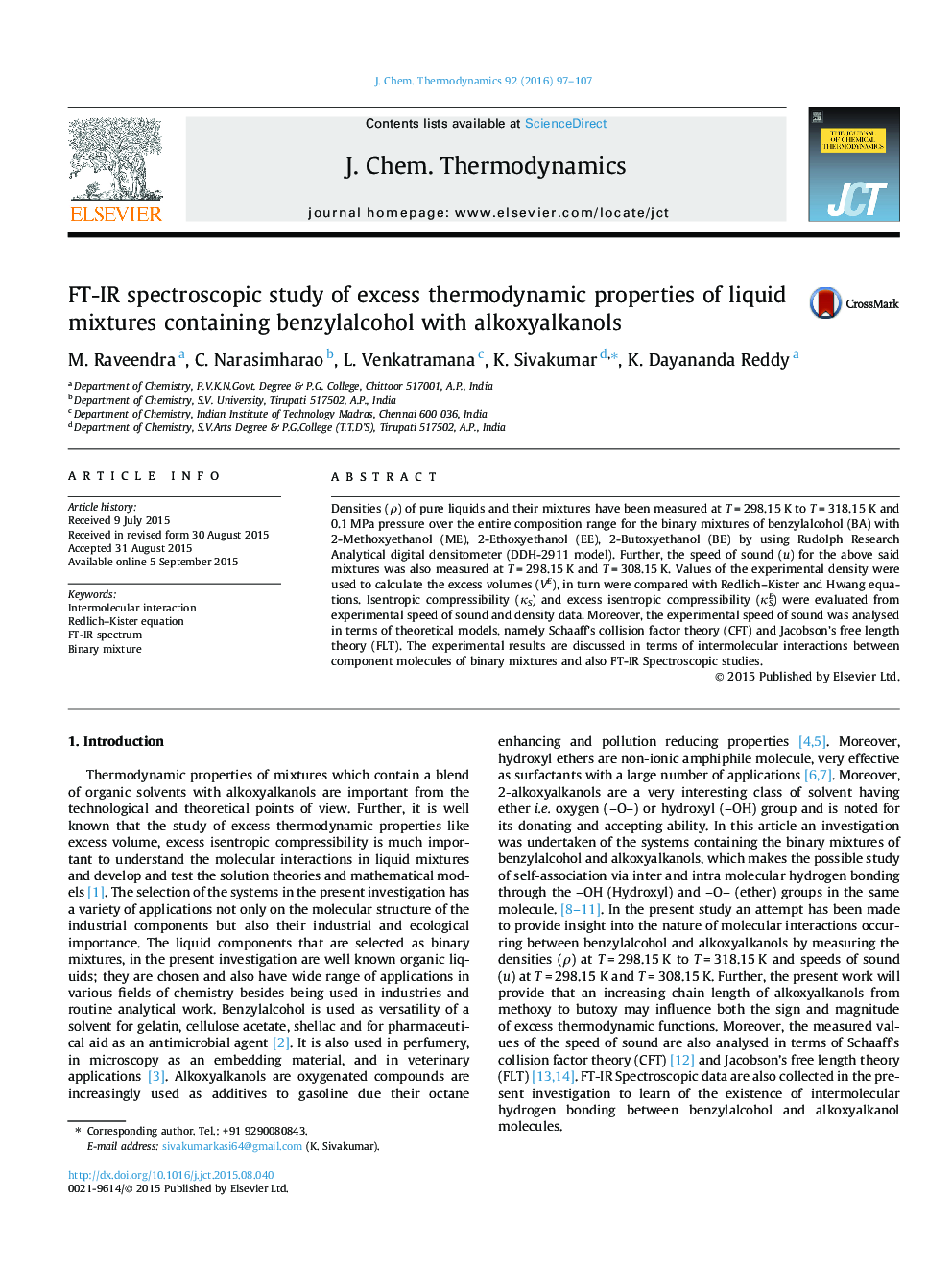| Article ID | Journal | Published Year | Pages | File Type |
|---|---|---|---|---|
| 215124 | The Journal of Chemical Thermodynamics | 2016 | 11 Pages |
•Excess properties were studied for the binary mixtures of benzylalcohol with 1-alkoxyalkanola.•Excess volume and isentropic compressibility data were correlated with Redlich–Kister and Hwang equations.•Intermolecular hydrogen bonding between aromatic and aliphatic hydroxyl groups were studied by FT-IR spectroscopy.
Densities (ρ) of pure liquids and their mixtures have been measured at T = 298.15 K to T = 318.15 K and 0.1 MPa pressure over the entire composition range for the binary mixtures of benzylalcohol (BA) with 2-Methoxyethanol (ME), 2-Ethoxyethanol (EE), 2-Butoxyethanol (BE) by using Rudolph Research Analytical digital densitometer (DDH-2911 model). Further, the speed of sound (u) for the above said mixtures was also measured at T = 298.15 K and T = 308.15 K. Values of the experimental density were used to calculate the excess volumes (VE), in turn were compared with Redlich–Kister and Hwang equations. Isentropic compressibility (κS) and excess isentropic compressibility (κSE) were evaluated from experimental speed of sound and density data. Moreover, the experimental speed of sound was analysed in terms of theoretical models, namely Schaaff’s collision factor theory (CFT) and Jacobson’s free length theory (FLT). The experimental results are discussed in terms of intermolecular interactions between component molecules of binary mixtures and also FT-IR Spectroscopic studies.
Graphical abstractThe graphical representation of intermolecular interactions between component molecules by FT IR spectroscopy: benzylalcohol (a), 2-methoxyethanol (b) and benzylalcohol + 2-methoxyethanol mixture.Figure optionsDownload full-size imageDownload as PowerPoint slide
